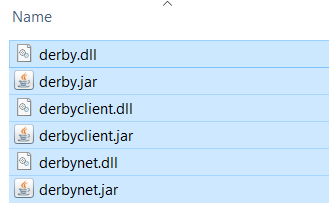Follow my previous post: https://www.nickdu.com/?p=896
Open Ext4 file system.
//Get the file system
var fs = ExtFileSystem.Open(disk.Parititions[0]);
Sample code to open a file for read
//Open a file for read
var file = fs.OpenFile("/etc/shells", FileMode.Open, FileAccess.Read);
//Check the file length
var filelen = file.Length;
var buf = new byte[filelen];
//Read the file content
var count = file.Read(buf, 0, (int)filelen);
file.Close();
var content = Encoding.Default.GetString(buf);
Console.WriteLine(content);
Sample code for listing all files in a folder
//List all files in /etc folder
foreach (var file in fs.GetFiles("/etc", "*", SearchOption.AllDirectories))
{
Console.WriteLine(file);
}
Sample code for file creation
//Open a file for write
var file = fs.OpenFile("/etc/test", FileMode.Create, FileAccess.Write);
var hello = "Hello World";
var buf = Encoding.ASCII.GetBytes(hello);
//Write to file
file.Write(buf, 0, buf.Length);
file.Close();
Full ExtDisk APIs
public sealed class ExtDisk : IDisposable
{
public IList<Partition> Parititions { get; }
public Geometry Geometry { get; }
public ulong Capacity { get; }
public static ExtDisk Open(string imagePath);
public static ExtDisk Open(int DiskNumber);
public sealed override void Dispose();
public byte[] GetMasterBootRecord();
}
Full ExtFileSystem APIs
public sealed class ExtFileSystem : IDisposable
{
public static string MountPoint { get; }
public string Name { get; }
public string VolumeLabel { get; }
public bool CanWrite { get; }
public string Description { get; }
public static ExtFileSystem Open(Partition partition);
public void CopyFile(string sourceFile, string destinationFile, bool overwrite);
public void CreateDirectory(string path);
public void CreateHardLink(string target, string path);
public void CreateSymLink(string target, string path);
public void DeleteDirectory(string path);
public void DeleteFile(string path);
public bool DirectoryExists(string path);
public sealed override void Dispose();
public bool FileExists(string path);
public ValueType GetCreationTime(string path);
public string[] GetDirectories(string path, string searchPattern, SearchOption searchOption);
public ulong GetFileLength(string path);
public string[] GetFiles(string path, string searchPattern, SearchOption searchOption);
public DateTime GetLastAccessTime(string path);
public DateTime GetLastWriteTime(string path);
public uint GetMode(string path);
public Tuple<uint, uint> GetOwner(string path);
public void MoveDirectory(string sourceDirectoryName, string destinationDirectoryName);
public ExtFileStream OpenFile(string path, FileMode mode, FileAccess access);
public string ReadSymLink(string path);
public void RenameFile(string sourceFileName, string destFileName);
public void SetCreationTime(string path, DateTime newTime);
public void SetLastAccessTime(string path, DateTime newTime);
public void SetLastWriteTime(string path, DateTime newTime);
public void SetMode(string path, uint mode);
public void SetOwner(string path, uint uid, uint gid);
public sealed override string ToString();
public void Truncate(string path, ulong size);
}
Full ExtFileStream APIs
public class ExtFileStream : Stream
{
public ExtFileStream(ExtFileSystem fs, string path, FileMode mode, FileAccess access);
public override long Position { get; set; }
public override long Length { get; }
public override bool CanWrite { get; }
public override bool CanRead { get; }
public override bool CanSeek { get; }
public override void Close();
public override void Flush();
public override int Read(byte[] array, int offset, int count);
public override long Seek(long offset, SeekOrigin origin);
public override void SetLength(long value);
public override void Write(byte[] array, int offset, int count);
}
The full SharpExt4 library can be found at my GitHub.
https://github.com/nickdu088/SharpExt4







